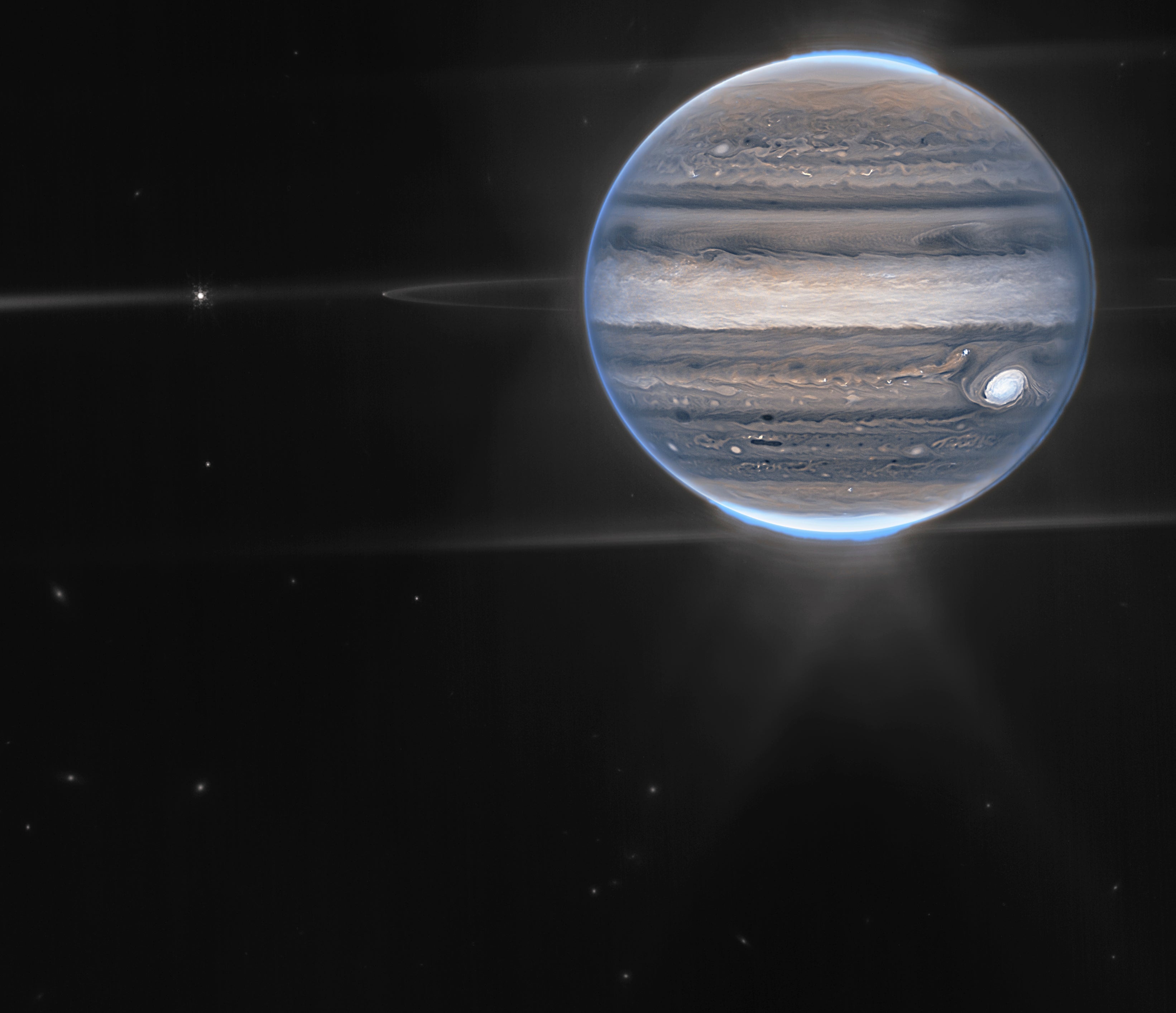New space telescope shows Jupiter's auroras, tiny moons
The world's newest and most powerful space telescope is showing Jupiter as never before, auroras and all

Your support helps us to tell the story
From reproductive rights to climate change to Big Tech, The Independent is on the ground when the story is developing. Whether it's investigating the financials of Elon Musk's pro-Trump PAC or producing our latest documentary, 'The A Word', which shines a light on the American women fighting for reproductive rights, we know how important it is to parse out the facts from the messaging.
At such a critical moment in US history, we need reporters on the ground. Your donation allows us to keep sending journalists to speak to both sides of the story.
The Independent is trusted by Americans across the entire political spectrum. And unlike many other quality news outlets, we choose not to lock Americans out of our reporting and analysis with paywalls. We believe quality journalism should be available to everyone, paid for by those who can afford it.
Your support makes all the difference.The world’s newest and biggest space telescope is showing Jupiter as never before, auroras and all.
Scientists released the shots Monday of the solar system's biggest planet.
The James Webb Space Telescope took the photos in July, capturing unprecedented views of Jupiter’s northern and southern lights, and swirling polar haze. Jupiter's Great Red Spot, a storm big enough to swallow Earth, stands out brightly alongside countless smaller storms.
One wide-field picture is particularly dramatic, showing the faint rings around the planet, as well as two tiny moons against a glittering background of galaxies.
“We’ve never seen Jupiter like this. It’s all quite incredible,” planetary astronomer Imke de Pater, of the University of California, Berkeley, said in a statement. He helped lead the observation. “We hadn’t really expected it to be this good, to be honest."
The infrared images were artificially colored in blue, white, green, yellow and orange, according to the U.S.-French research team, to make the features stand out.
NASA and the European Space Agency's $10 billion successor to the Hubble Space Telescope rocketed away at the end of last year and has been observing the cosmos in the infrared since summer. Scientists hope to behold the dawn of the universe with Webb, peering all the way back to when the first stars and galaxies were forming 13.7 billion years ago.
The observatory is positioned 1 million miles (1.6 million kilometers) from Earth.
___
The Associated Press Health and Science Department receives support from the Howard Hughes Medical Institute’s Department of Science Education. The AP is solely responsible for all content.